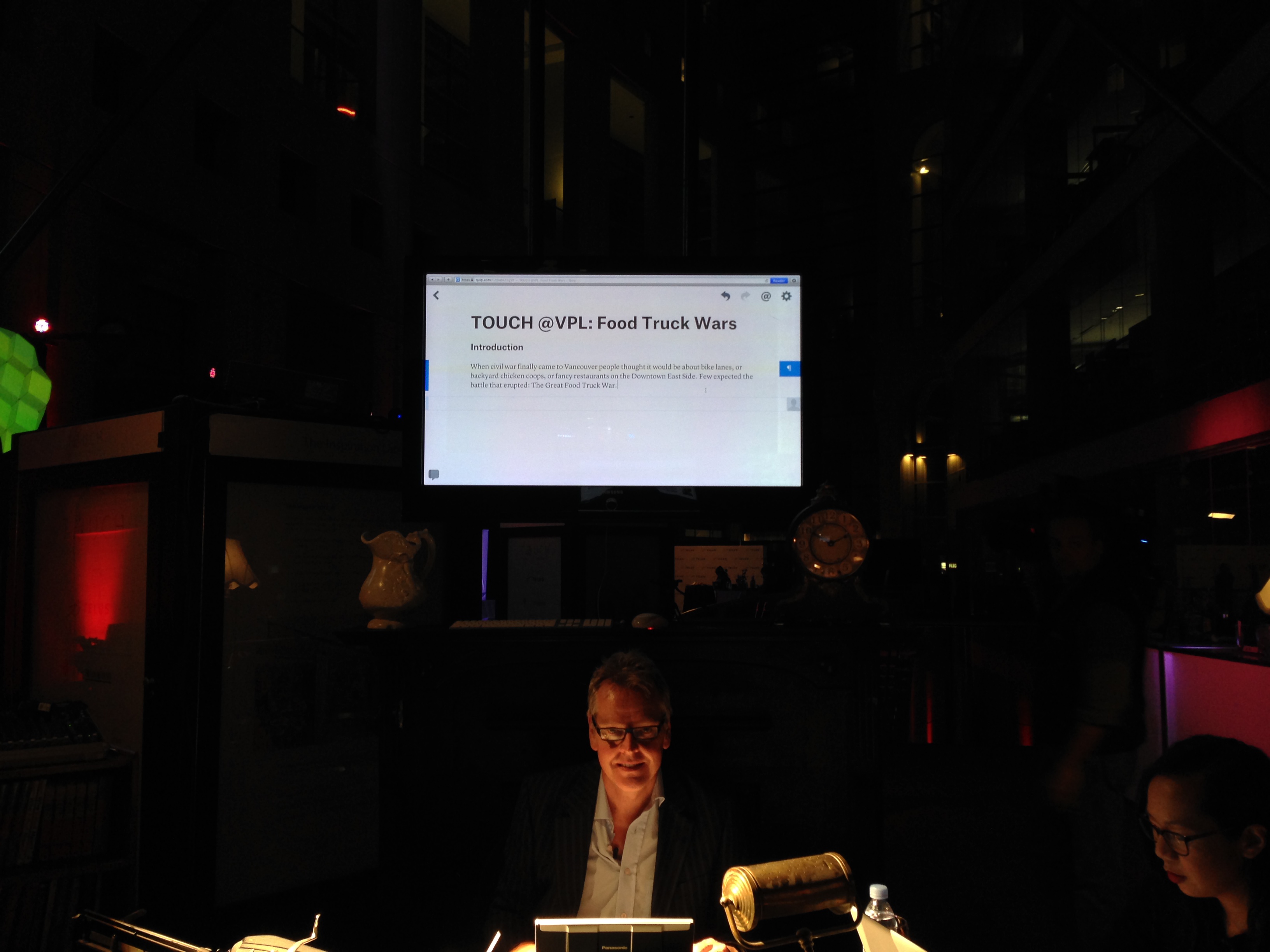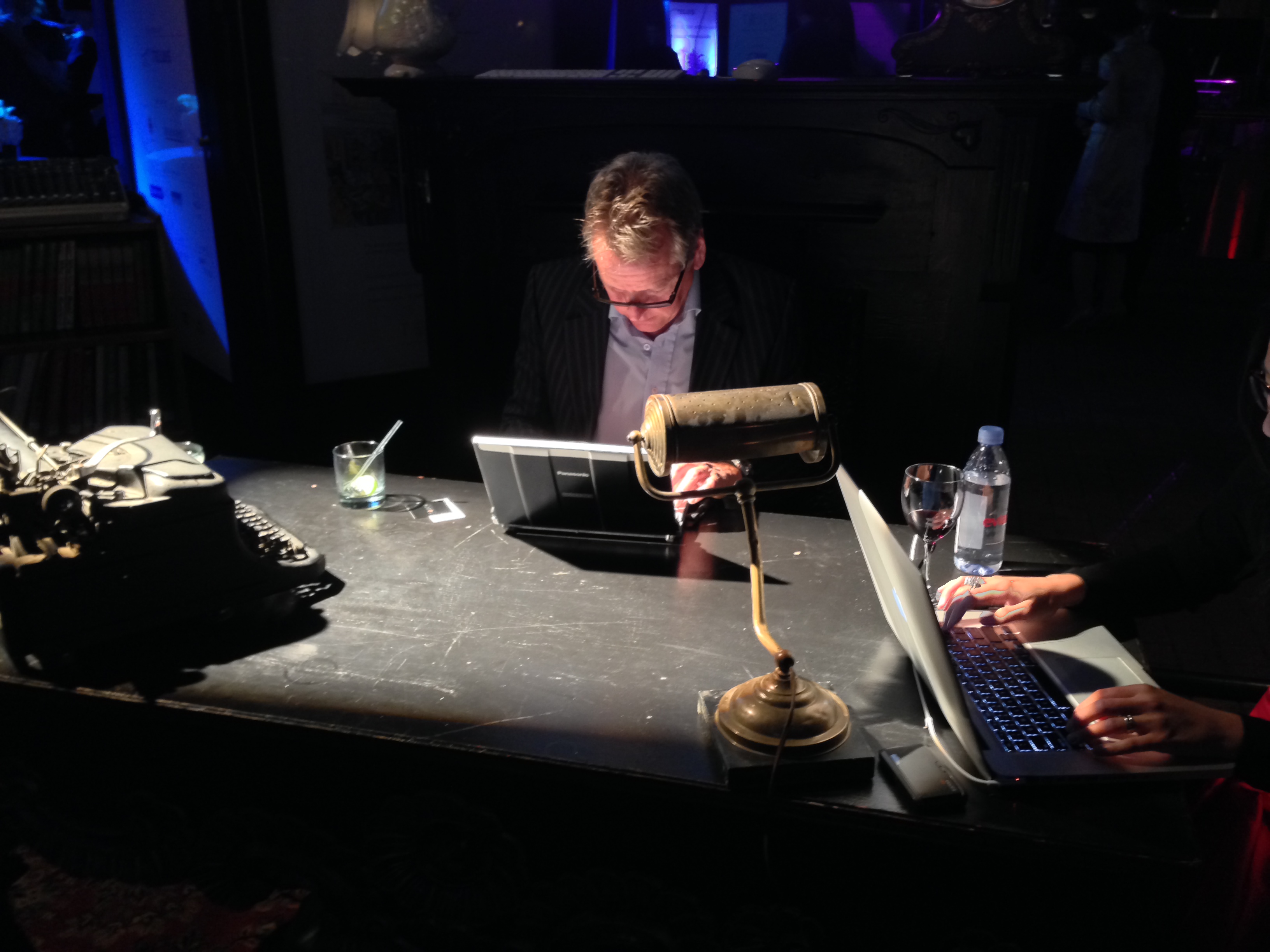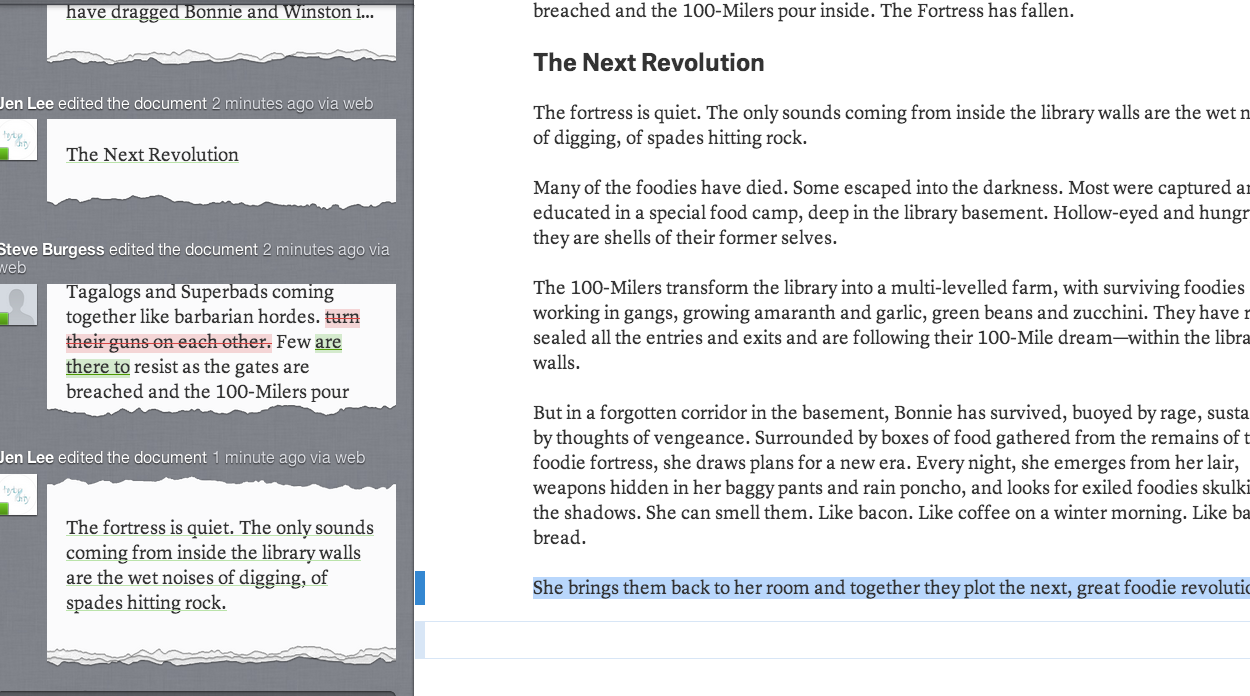Case Study: Vancouver Public Library, Collaborative Writing, and The Food Truck Wars

Tris Hussey is a best-selling author, long-time technologist, blogger, and freelance writer from Vancouver, British Columbia. In this guest post, he explains how he and a group of writers used Quip to collaboratively write a story called “The Food Truck Wars".
Recently I had a chance to put Quip through its paces at the Vancouver Public Library Foundation's TOUCH fundraising event where two authors would be collaboratively working on a short story in front of a live audience. It was a unique challenge, but it turned out to be something Quip was uniquely suited to handle. (For a more detailed background on the event, you can read the post I wrote to promote the event.)
For the event, we had two authors who needed to work together on a story about Vancouver, live, in front of an audience. They would be writing in Google Docs or Libre Office on their own, then paste each finished section into the “master” document. The master document would be projected on screen for the audience to see. To make things really fun, this master document would need to be polished for publication in the Vancouver Sun.

The first suggested solution was to use IRC. IRC seemed like a pretty good idea except on screen the story was too disjointed for reading and pulling the final product together for publication would mean a lot of editing to reshape the narrative. What we needed was something simple, elegant, sexy, and drop dead easy. I had been using Quip with a local startup (have thesaurus, will travel) and figured that it would probably fit the bill nicely.
It did—in spades.
Getting the two authors and “the screen”using Quip was easy and after a couple questions about formatting, we were off and running. After about an hour of playing around with Quip, everyone was pretty happy with how things looked and worked. The only glitch was the commenting and editing sidebar. The sidebar was great for the two authors and I to collaborate, but we didn't want the audience to see these literal sidebar conversations. Again Quip came through with the perfect solution—a simple (beta) bookmarklet let me hide the sidebar on the display screen while letting the rest of us collaborate together. Simple. Elegant. Done.

The night of the event everything flowed smoothly. I kept tabs on things from across the “salon”, occasionally copying bits of the story into the Twitter stream and pasting suggestions back in. It was really the best possible tech outcome—the technology didn’t get in the way, it just worked and let the authors create the story. About four hours later the story was done. An entire collaborative short story written before a public audience in about 4 (ish) hours. With the story finished, everything could be copied and pasted into Word and sent off to the newspaper for publication—after a little spit and polish from the authors, of course.

And that’s how Quip helped the Vancouver Public Library Foundation raise money to build Canada’s first Interactive Creation Center.
